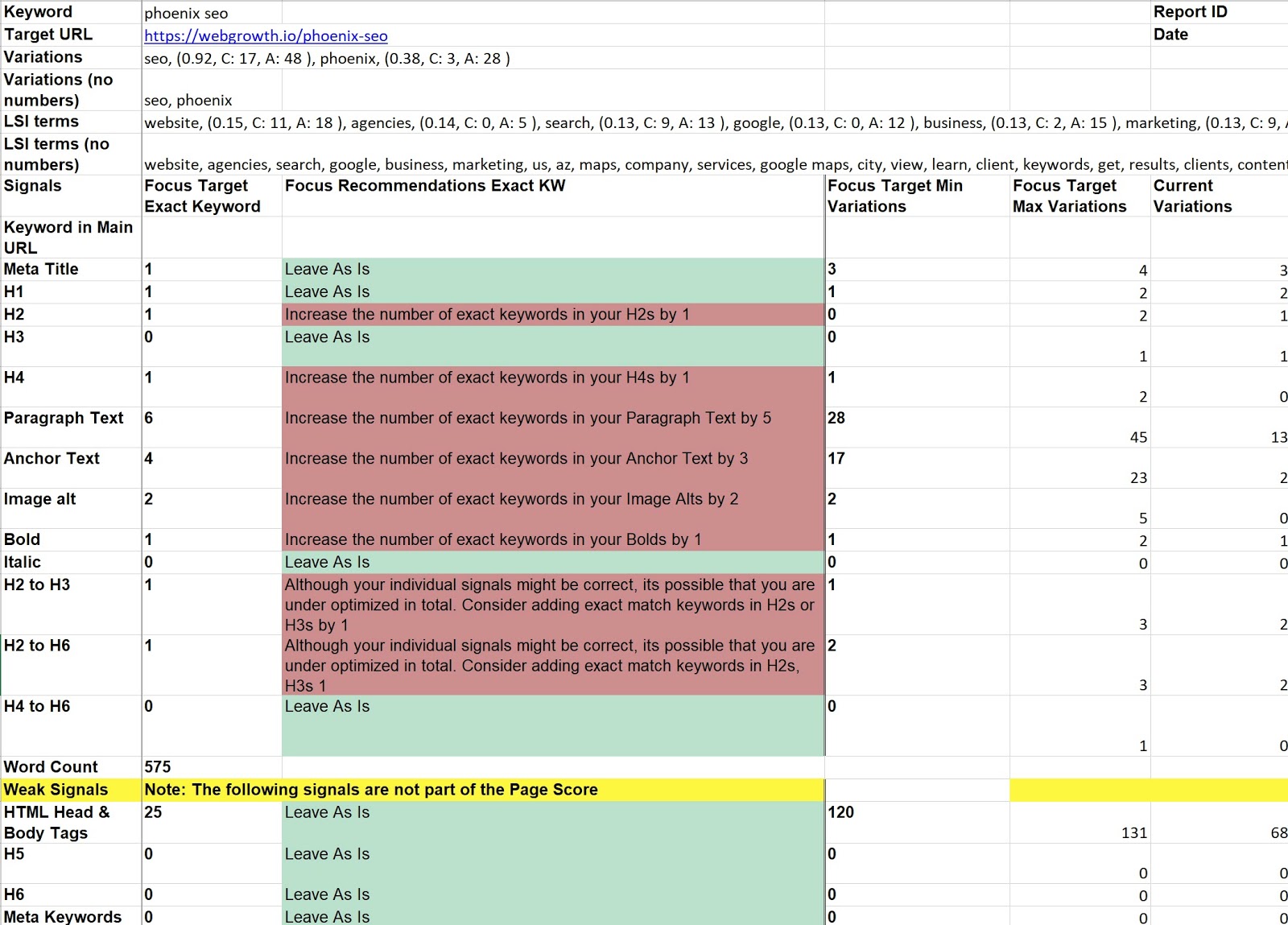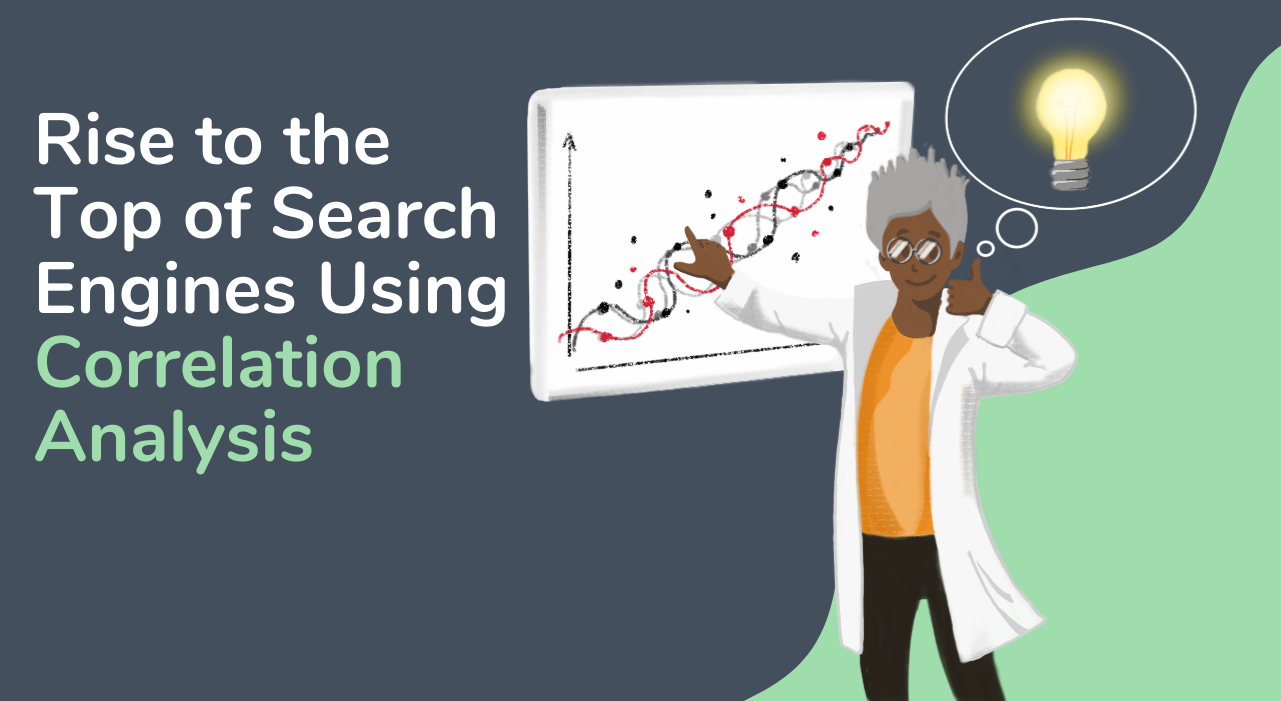In today’s digital age, top search engine rankings are a pinnacle of online business success. The reasons are pretty clear: reaching that top spot in search engine results pages (SERPs) would mean increased traffic to your site and the potential to boost conversions that catapult your business ahead of the competition.
Unfortunately, top rankings hardly ever happen by chance. Even the most knowledgeable internet marketers struggle with getting to the top of Google search. But with strategic planning and the right SEO research strategies, you can dramatically increase your chances of claiming that #1 spot. And one way to achieve that is through correlation analysis.
In this post, we explain the correlation analysis process, how to do correlation analysis in 2021, and a few correlation analysis tips so that you can make data-backed decisions for your site’s SEO strategy. But before we dive in, let's clear something up.
What exactly is correlation analysis?
Correlation analysis works as a powerful research strategy in helping you to rank higher, get more traffic, and earn more conversions. It involves researching your competitors' keywords, links, content, and other factors to reverse-engineer the most successful components of their SEO strategy into your own strategy.
The end goal of such an analysis is to gain significant insights into the strategies that are working for others in your industry so you can adopt them, improve them, and gain a competitive edge. In turn, this will lead your SEO strategy in the right direction.

As you can see, the raw data is very in-depth and quite complex.
Now you might ask yourself… How do I do correlation analysis? What metrics are at play which causes one website to rank over another? And where should I begin?
There are several ways to collect competitor data. Here at Webgrowth, we leverage sophisticated in-house software that analyzes the top performing pages of Google for any given keyword, in order to draw a correlation of their key ranking signals. It’s then our job to consolidate this data in order to draw up a clear and actionable path to victory for our clients.
Speaking of ranking signals, there are also dozens if not hundreds of different correlation factors that you can use to start bumping up your search engine rankings and business visibility. Here, we’ll take you through some of the most critical factors.
Keyword Research
This may sound obvious, but before you can do any correlation analysis, you first need to find out what main keyword(s) your audience uses when searching for your products, services, and content. After all, SEO isn’t just about showing up in the search results — it’s about showing up in search results for the keywords that your potential visitors are searching for, then leveraging this information to optimize your content accordingly.
For example, if you are an online women’s clothing boutique, the obvious keyword phrases would be something along the lines of “online women’s clothing boutique” and/or “online boutique for women” but sometimes the most valuable keyword opportunities aren’t so obvious.
Identify Your SEO Competitors
The next step is to identify your top SEO competitors. Competitors are the ones who rank in the first search engine results pages (SERPs) of the keywords you’re targeting. Fortunately, finding out who your competitors are is as easy as entering your keywords into a search engine, like Google, then seeing which domains are ranking.
Another way we find who your top competitors are is by utilizing our in-house correlation analysis software. This allows us to analyze your rival’s current ranking position so you can identify your competitors, evaluate opportunities, and adjust your SEO competitor research accordingly.
On-Page SEO Correlation Factors
SEO correlation analysis also requires optimizing for a combination of factors that search engines consider important. Here are some of the most critical factors:
Meta Title:
A meta title (also called title tag) is the HTML element used to specify the title of a webpage. Meta titles are used by search engines, like Google, to create an easy-to-read link to a website from their search results. Since your title tag describes what your page is about, it’s a very important ranking signal to Google. By optimizing your meta title to include relevant keywords that match searcher intent, you can increase the possibility that they rank, resulting in more website traffic.

Anchor Text:
Anchor text is the clickable text that hyperlinks display when linking to another document or page on the web. Google utilizes anchor text to help better understand what your page is about and also, for which keywords it should rank. By optimizing—but not over-optimizing—your anchor text, you can improve your SEO strategy and watch your rankings climb.

Image Alt Text:
Also called "alt tags," image alt text is the written copy that appears in place of an image on a webpage. This text helps screen-reading tools describe images to visually impaired readers and allows search engines to better crawl and rank your website. That’s why you should always remember to give your images relevant alt attributes. Alt text strengthens the message of your page with search engine spiders -- which helps create a better user experience for your visitors, thus helping improve your overall site ranking.

Text Length:
Text length is quite obvious: it’s how long your text is. But, why is it important? Well, you have a higher chance of ranking in Google if you write long, high-quality blog posts. The longer your (SEO-tailored) text, the more often your focus keywords appear.
This is no excuse for keyword stuffing though! If you optimize your copy naturally, your keywords will pop up here and there throughout your text. Thankfully, our in-house correlation software helps you by checking the length of your texts. It calculates how many words you’ve added on a page and whether you have enough words to rank.
LSI Keywords:
LSI (latent semantic indexing) keywords are essentially related terms and phrases that are similar to a webpage’s target keyword. Their purpose is to help search engines better understand the content of the page by adding context and connecting the copy to the target keyword.
For example, let’s say you’ve published a blog post about yoga health benefits. Google will scan your page to see if you use the term “balance, fitness, flexibility” in your content, meta title, image alt text, etc. What this means is, Google works to find out what the main topic of a page is, and relies on LSI keywords to understand the content at a much deeper level than simply looking for multiple occurrences of a keyword.
Fortunately, our sophisticated software helps us find related keywords to help improve your LSI keyword strategy. We simply enter your target keyword into the software to generate an in-depth report of LSI keywords. This in turn helps increase your search engine visibility and the potential to boost conversions that catapult your business ahead of the competition.
Summary of Correlation Analysis
All in all, correlation analysis is one of the best ways to help improve your search engine rankings and drive organic traffic to your online business. Using our in-house methods, we can help you rank even higher in the keywords that will convert to sales. Our tried-and-true SEO techniques and practices have resulted in many success stories for our clients.
Please feel free to contact us to learn more about our correlation strategies and other creative SEO tactics we use to grow our clients' brands online.
Interested in Growing Your Organic Traffic?
Contact us to learn more about our Competitor Link Reclaimation strategy and other creative SEO tactics we use to grow our clients' brands online.








